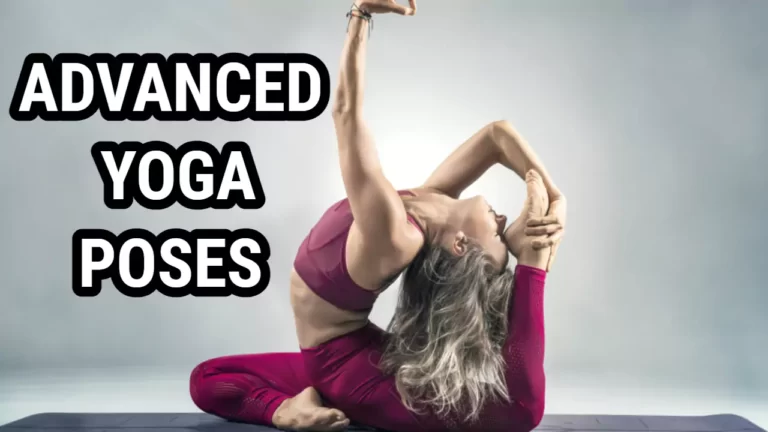5 Yoga Poses To Improve Your Thinking Power That Will Leave You Mind-Blown

Are you looking for ways to enhance your thinking power? Look no further than yoga! Yoga is not only a great way to stay fit and flexible, but it also has numerous mental and cognitive benefits. Here, we will explore how yoga poses can improve your thinking power through physical, mental, and spiritual benefits.
The Importance of Thinking Power
Before diving into the benefits of yoga on thinking power, it is important to understand what thinking power is and why it matters. Thinking power, also known as cognitive function, refers to our ability to process and use information. This includes skills such as memory, concentration, attention, reasoning, and problem-solving. Improving thinking power can have a significant impact on our daily lives, from better academic or work performance to improved decision-making and creativity.
Physical Benefits of Yoga Poses on the Brain
Yoga poses can have a direct impact on the brain’s physical health. Here are some ways in which yoga poses can benefit the brain:
Increase Blood Flow to the Brain
Yoga poses that involve inversion, such as downward dog or headstand, increase blood flow to the brain. Increased blood flow means more oxygen and nutrients are delivered to the brain, which can improve brain function.
Improve Brain Plasticity
Brain plasticity refers to the brain’s ability to change and adapt. Yoga poses that involve balance and coordination, such as tree pose or warrior II pose, can improve brain plasticity. This means that the brain becomes more adaptable to new experiences and can better handle cognitive challenges.
Decrease Inflammation
Chronic inflammation in the brain has been linked to cognitive decline and neurodegenerative diseases. Yoga poses that involve stretching and gentle movement, such as seated forward fold, can decrease inflammation in the brain.
Boost Brain-Derived Neurotrophic Factor (BDNF)
BDNF is a protein that plays a key role in brain function, including learning and memory. Yoga poses that involve physical activity, such as warrior II pose, can boost BDNF levels in the brain, which can improve cognitive function.
Mental Benefits of Yoga Poses on the Brain
In addition to physical benefits, yoga poses can also have a significant impact on mental health and cognitive function. Some of the ways in which yoga poses can benefit the brain:
Reduce Stress and Anxiety
Yoga has been shown to decrease stress and anxiety levels, which can have a positive impact on cognitive function. Practicing yoga regularly can help regulate the body’s stress response, making it easier to handle stressful situations.
Improve Concentration and Focus
Yoga poses that involve focus and attention, such as tree pose or eagle pose, can improve concentration and focus. These poses require mental effort and attention to maintain balance, which can translate into improved cognitive function.
Enhance Memory
Yoga has been shown to enhance memory function, which can be especially beneficial for older adults. Certain yoga poses, such as seated meditation or corpse pose, can improve memory by reducing stress and improving blood flow to the brain.
Increase Self-Awareness
Yoga encourages self-awareness and mindfulness, which can improve cognitive function by helping individuals better understand their own thoughts and emotions. This can lead to better decision-making and problem-solving skills.
Spiritual Benefits of Yoga Poses on the Brain
Yoga is not only a physical exercise but also a spiritual one. Mentioned are some of the ways in which yoga poses can benefit the brain spiritually:
Improve Emotional Regulation
Yoga can help individuals regulate their emotions and manage stress. Certain poses, such as child’s pose or savasana, can promote relaxation and reduce feelings of anxiety or depression.
Increase Empathy and Compassion
Yoga can also increase feelings of empathy and compassion towards others. This is because yoga promotes a sense of interconnectedness and oneness with all beings, which can lead to a greater understanding and empathy towards others.
Enhance Mindfulness and Awareness
Yoga encourages mindfulness and awareness, which can help many people become more present in the moment and less caught up in distracting thoughts. This can improve cognitive function by allowing individuals to focus their attention on the task they have.
Promote a Sense of Inner Peace
Yoga poses, such as warrior I or pigeon pose, can promote a sense of inner peace and calm. This can improve cognitive function by reducing stress and anxiety levels, making it easier to concentrate and focus.
Yoga Poses That Boost Brain Power
Standing Poses
Standing poses, such as warrior I and II, can enhance cognitive function by increasing blood flow to the brain. These poses require strength, balance, and coordination, which can help enhance concentration and focus. Additionally, standing poses can promote a sense of stability and grounding, which can reduce stress and anxiety levels, making it easier to concentrate and focus.
To practice warrior I, stand with your feet hip-width apart and place your left foot back about 3-4 feet. Turn your left foot out at a 45-degree angle and slightly bend your right knee, keeping it directly above your ankle. Raise your hands above your head, palms facing each other. Hold for couple of breaths and then repeat on the other side.
Inversions
Practicing inversions, such as headstands or handstands, can offer several benefits for cognitive function by increasing blood flow to the brain. These postures require a combination of strength, balance, and coordination, which can help enhance concentration and focus. Additionally, inversions can promote mental clarity and calmness, which can significantly reduce stress and anxiety levels. As a result, inversions can make it easier to concentrate and focus on tasks.
To perform a headstand, Start on your hands and knees and put your forearms on the floor. Clasp your fingers together and rest the top of your head on the ground. Lift your knees off the floor and walk your feet closer to your head. Gradually raise your legs upward while keeping your core engaged and weight evenly distributed. Maintain the pose for a few breaths, and then slowly lower your legs back down.
Backbends
Backbends, such as camel pose or bridge pose, are beneficial for cognitive function as they stimulate the nervous system and increase energy levels. These poses require a combination of flexibility, strength, and coordination, which can enhance concentration and focus. Furthermore, backbends can instill a sense of confidence and vigor, improving mental well-being.
To perform camel pose, start by kneeling on the ground with your knees hip-width apart. Put your hands on your lower back and push your hips forward. Gradually arch your back, reaching your hands to your heels if possible. Maintain the pose for a few breaths and then slowly release.
Forward Folds
Seated and standing forward folds have the potential to enhance cognitive function by inducing a calming effect on the nervous system and decreasing stress levels. These poses require a combination of flexibility, strength, and coordination, which can lead to improved concentration and focus. Moreover, the experience of relaxation and comfort that accompanies forward folds can promote better mental well-being overall.
To perform a seated forward bend, begin by sitting on the ground with your legs extended in front of you. Inhale deeply and raise your arms up towards the sky. As you exhale, fold forward and stretch your arms towards your toes or ankles. Hold this pose for a few breaths before slowly releasing.
Twists
Twists such as seated spinal twist or twisted lunge have the potential to boost cognitive function by stimulating the nervous system and increasing blood flow to the brain. These poses require a combination of flexibility, strength, and coordination, which can contribute to improved concentration and focus. Moreover, twists can create a sense of purification and detoxification, promoting better mental well-being overall.
To perform seated spinal twist, start by sitting on the ground with your legs extended in front of you. Bend your right knee and position your right foot outside your left knee. Then, place your left elbow on the outer side of your right knee, and twist your torso towards the right. Use your right hand to support yourself behind your back, and hold this pose for a few breaths before repeating the steps on the other side.
The Mind-Body Connection
It’s important to remember that the benefits of yoga poses on brain power are not just physical. Yoga is a practice that connects the mind and body, and as such, it can have a profound impact on our mental health and well-being.
Practicing yoga regularly can improve overall mental clarity, focus, and concentration, which can lead to increased productivity and efficiency in our daily lives. Additionally, yoga can reduce stress and anxiety levels, which can have a positive impact on our overall mental health.
Incorporating Yoga into Your Daily Routine
Now that we have explored the numerous benefits of yoga on thinking power, how can you incorporate yoga into your daily routine? Here are some tips to help you get started:
Start with Simple Poses
If you are new to yoga, it can be overwhelming to try and tackle complex poses right away. Start with simple poses, such as mountain pose or seated meditation, and work your way up to more challenging poses as you become more comfortable.
Practice Regularly
Consistency is key when it comes to yoga. Try to practice yoga at least a few times a week to experience the full benefits of the practice on your cognitive function.
Find a Community
Joining a yoga community can provide support and encouragement as you begin your yoga practice. Look for local yoga studios or online communities to connect with other yogis.
Listen to Your Body
It is important to listen to your body and not push yourself beyond your limits. If a pose feels uncomfortable or painful, modify it or skip it altogether.
Make it Your Own
Yoga is a personal practice, so it is important to make it your own. Experiment with different poses and sequences to find what works best for you.
My Personal Experience with Yoga
As someone who has been practicing yoga for over five years, I can attest to the numerous benefits it has had on my thinking power. Prior to practicing yoga, I often struggled with anxiety and had difficulty focusing on tasks for extended periods of time. However, since incorporating yoga into my daily routine, I have noticed a significant improvement in my concentration, memory, and overall mental clarity.
One of my favorite yoga poses for improving cognitive function is eagle pose. This pose requires focus, balance, and coordination, making it a great way to enhance concentration and cognitive function. Additionally, eagle pose can help relieve tension in the shoulders and neck, which can be especially helpful for individuals who spend a lot of time sitting at a desk.
Conclusion
Yoga poses can have a significant impact on our thinking power through physical, mental, and spiritual benefits. From increasing blood flow to the brain to improving emotional regulation, yoga is a powerful tool for enhancing cognitive function.
By adding yoga into your daily routine, you can experience these benefits for yourself and improve your overall quality of life.





